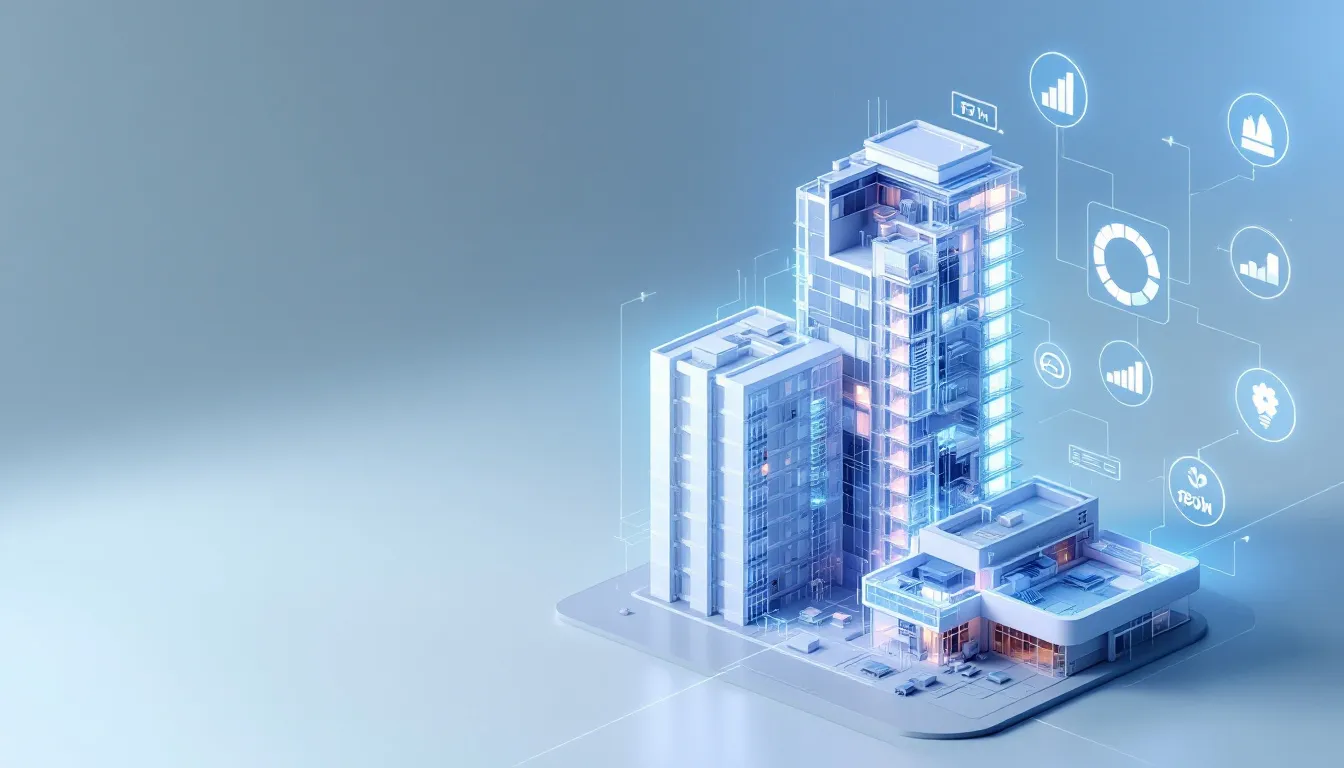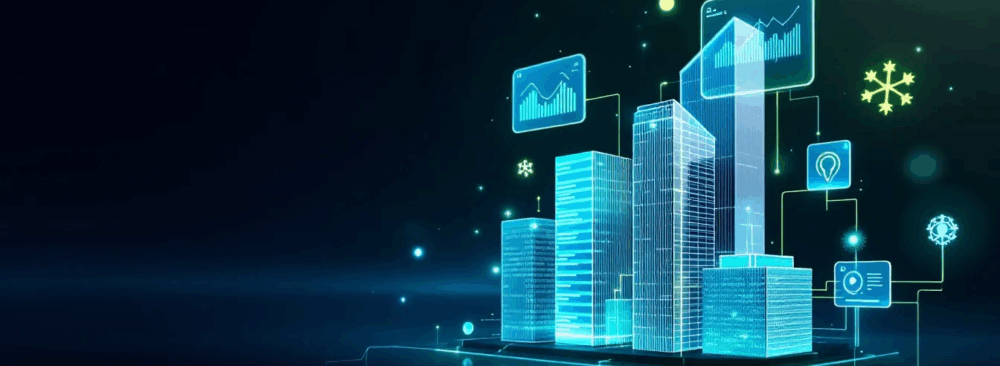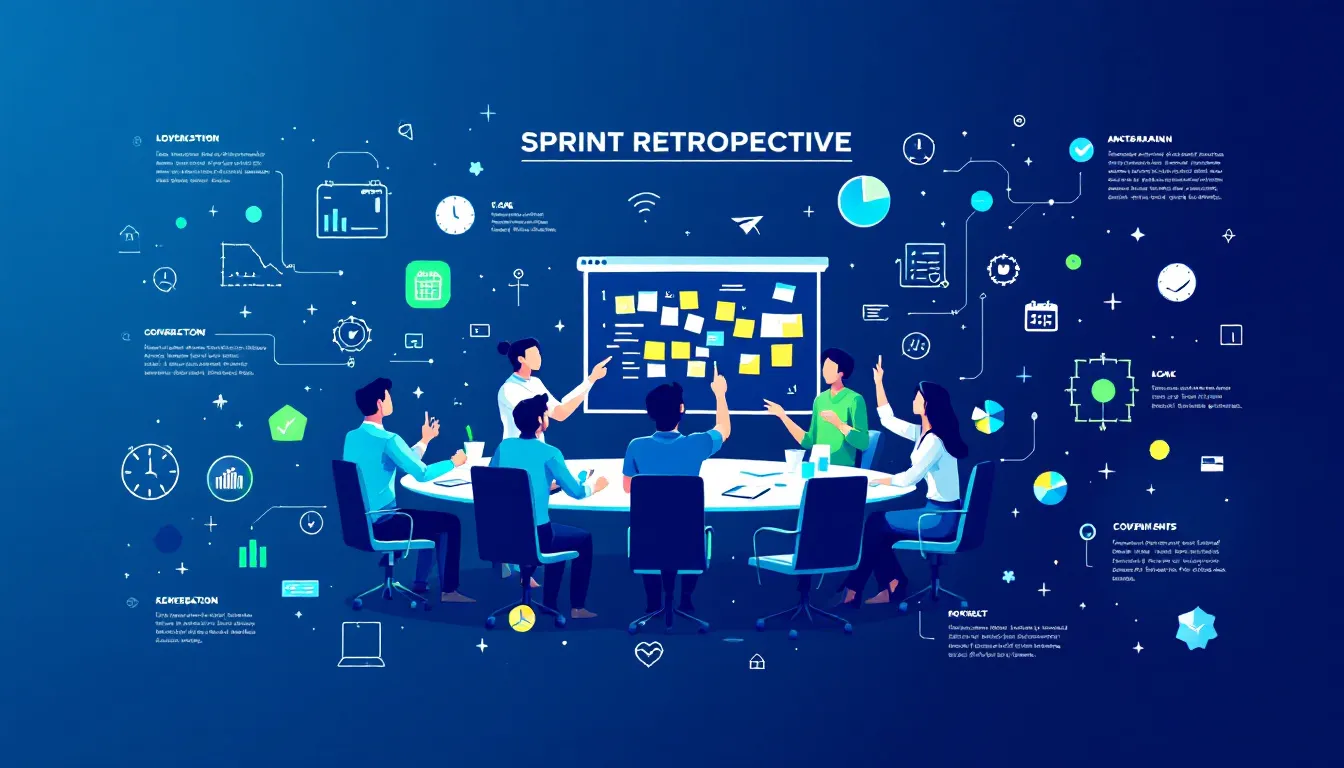Building energy-efficient software solutions is more important than ever as we approach 2025. This article will show you how to reduce energy consumption and operational costs through top tools and strategies. You’ll learn about key features, industry trends, real-world case studies, and how to choose the best software for your needs.
The Role of Energy Efficient Software in Modern Construction
Energy-efficient software is pivotal in modern construction for cutting energy consumption and operational costs. Integrating these tools into construction practices helps builders achieve sustainability goals, including reduced emissions and better indoor climates. This holistic approach not only enhances the efficiency of buildings but also supports broader environmental sustainability objectives.
Energy-efficient buildings are designed to maximize energy optimization and minimize wastage. Through advanced energy modeling and energy simulation, architects and engineers can predict how a building will perform under various conditions, allowing for smarter design decisions. These tools are indispensable in the push towards smart buildings and low carbon buildings, contributing to a more sustainable built environment.
Key Features of Energy Efficient Software
Energy-efficient software comes with a suite of advanced features that enable precise energy modeling and energy analysis. One of the key benefits is the ability to assess potential energy savings from various design choices through advanced energy modeling features. This allows designers to identify inefficiencies and optimize building performance from the very beginning of a project.
Dynamic simulation tools are another crucial component, allowing users to predict energy performance under varying operating conditions. Real-time monitoring capabilities provide instant insights into energy usage, enabling quick adjustments and continuous improvement of building energy systems through co simulation and simulation engines.
These features collectively enhance the efficiency of energy management and contribute to the developed energy-efficient buildings.
Top Software Solutions for Energy Efficiency in 2025

In 2025, the landscape of energy-efficient software is dominated by platforms that offer advanced simulation capabilities to optimize energy performance in buildings. The demand for these tools is driven by the increasing need for sustainable practices in the construction industry and the desire to reduce energy operational costs and power efficiency.
Leading the pack are solutions like:
- Autodesk Insight
- IES Virtual Environment
- EnergyPlus Each offers unique features that cater to different aspects of energy modeling and simulation. Additionally, other notable tools such as DesignBuilder and TRACE 700 continue to play significant roles in achieving energy efficiency in architectural projects.
Let’s delve deeper into these top software solutions.
Autodesk Insight
Autodesk Insight stands out for its advanced energy optimization capabilities, which significantly enhance building performance. Key features and applications include:
- Comprehensive energy modeling features that help in lowering greenhouse gas emissions
- Improvement of overall energy efficiency in construction projects
- Notable application in the One Taikoo Place, where its integration led to remarkable improvements in energy performance.
Autodesk Insight enables architects and engineers to make informed design decisions that lead to sustainable buildings. Its ability to integrate with other systems and provide real-time data makes it an invaluable tool for energy optimization and management.
IES Virtual Environment
IES Virtual Environment (IESVE) is renowned for its integrated environmental solutions in energy analysis. Key features include:
- The APACHE engine, noted for its flexibility and unmatched features in building energy simulation.
- Automated parametric simulations, allowing users to test multiple design scenarios quickly.
- The ability to determine the optimal energy performance through rapid scenario testing.
The software supports various renewable energy technologies, such as solar PV and geothermal systems, and includes key metrics like Site Energy, Source Energy, Carbon Emissions, Energy Cost, and Peak Demands for thorough energy modeling. Its use of the ApacheSim simulation engine and Parallel Simulation Manager enhances the speed and efficiency of simulations.
EnergyPlus
EnergyPlus is an advanced energy modeling software that provides detailed simulations of building energy consumption. As an open-source platform, it offers unparalleled flexibility for users to adapt the software according to their specific energy modeling needs. This makes EnergyPlus a preferred choice for projects requiring customized solutions for energy optimization.
The software supports a wide range of applications, including lighting controls, HVAC systems, and thermal comfort analysis, making it a comprehensive tool for building energy modeling and energy simulation. Its ability to conduct detailed energy analysis helps in optimizing building performance and reducing utility bills while also considering heat management.
Other Notable Tools
Beyond the core solutions, tools like DesignBuilder and TRACE 700 significantly enhance energy efficiency in construction projects. DesignBuilder offers advanced energy modeling and simulation features that aid in optimizing energy use, while TRACE 700 provides comprehensive energy analysis for evaluating HVAC system performance.
These tools are essential for architects and engineering engineers looking to achieve energy-efficient designs and comply with modern energy codes. Their integration into construction projects helps in reducing energy consumption and operational costs, thereby supporting sustainable architecture building practices.
Integration with Building Information Modeling (BIM)

Building Information Modeling (BIM) plays a crucial role in enhancing the efficiency of energy modeling. By facilitating the seamless integration of various building systems, such as HVAC and lighting, BIM boosts energy efficiency and overall building performance. This interoperability with other systems is essential for effective data sharing and integration, making energy modeling more accurate and comprehensive.
User-friendly interfaces in BIM software enhance accessibility for non-technical users, allowing them to analyze energy data and implement energy-efficient practices more easily. When evaluating energy analysis software, consider the following:
- Assess its usability across various user levels.
- Evaluate its ability to integrate with existing systems and tools.
- Ensure robust customer support and training resources are available to facilitate user onboarding and troubleshooting.
Benefits of Using Energy Efficient Software
The use of energy-efficient software offers numerous key benefits, including improved energy performance, cost savings, and enhanced building design. For instance, EnergyPlus is designed to simulate complex building heating, cooling, lighting, and ventilation systems, leading to enhanced energy performance. TRACE 700 is recognized for its detailed analysis of HVAC system performance, which is crucial for energy efficiency assessments.
BIM software enables accurate energy assessments, helping designers pinpoint inefficiencies and optimize overall building performance. Notable examples include the Bullitt Center in Seattle and the David and Lucile Packard Foundation Headquarters, both of which have achieved net-zero bim energy through innovative design and energy modeling.
Utilizing BIM also allows designers to select eco-friendly materials, minimizing waste and lessening environmental impact.
Case Studies
Case studies are pivotal in showcasing the effectiveness of energy-efficient software solutions. They provide real-world examples of how these tools have been successfully implemented to achieve significant energy savings and sustainability goals. For instance, the Exploratorium in San Francisco achieved Net Zero Energy status by producing 85% of its energy from a large solar panel array, allowing visitors to explore sustainable practices at the national renewable energy laboratory.
These case studies demonstrate how energy-efficient software can reduce overall energy consumption and promote sustainability. By exploring these examples, we can better understand the practical applications and benefits of these technologies.
Net-Zero Buildings
Net-zero buildings are designed to consume no more energy than they produce, contributing significantly to sustainability goals. A prime example is the McDonald’s Net-Zero Restaurant, which utilized IESVE software for energy modeling to achieve its energy efficiency targets. These buildings play a crucial role in the movement towards low carbon buildings and a more sustainable built environment.
The concept of net-zero energy is a testament to the effectiveness of energy-efficient software solutions in optimizing building performance and reducing energy usage. Focusing on building energy and performance, these projects set a benchmark for future sustainable buildings.
Corporate Sustainability Initiatives
Corporate sustainability initiatives are crucial for businesses looking to lower their environmental impact and boost energy efficiency. Swire Properties, for instance, reduced GHG emissions intensity by nearly 20% through the use of 3D modeling and energy-efficient technologies. Similarly, UPS implemented a route optimization software called ORION, saving the company 10 million gallons of fuel annually and significantly reducing its carbon footprint.
These initiatives illustrate the pivotal role of energy-efficient software in achieving sustainability goals and regulatory compliance. By adopting these technologies, corporations can make substantial investments in sustainable practices and demonstrate their commitment to environmental sustainability.
Industry Trends in Energy Efficient Software

The industry trends in energy-efficient software are rapidly evolving, with innovations such as AI and IoT playing a significant role in technology. For example, UPS’s AI routing system, ORION, has significantly lowered fuel consumption and reduced carbon emissions. Similarly, General Electric’s digital wind farm initiative utilizes IoT and digital twins to optimize wind turbine efficiency.
With the expected doubling of building stock by 2060, there is an increased need for sustainable building solutions. These trends highlight the importance of continuous innovation in energy-efficient software to meet the growing demands of the construction industry and support environmental sustainability and build smarter.
Choosing the Right Software for Your Project
Selecting the right energy analysis software is crucial for the success of energy-efficient projects. Key criteria for evaluation include:
- Accuracy
- Reliability
- Usability
- Functionality
- Compatibility
- Performance
- Cost
- Technical support
- Industry recognition
Balancing budget constraints with the need for specific features is essential to avoid overly simplistic or overly complex solutions.
Using energy analysis software can lead to significant cost savings by identifying energy-efficient designs and reducing utility bills. The right software selection can profoundly impact both performance and costs, making it a critical decision for any project.
Summary
In summary, energy-efficient software solutions are indispensable in modern construction, offering advanced features for energy modeling, simulation, and real-time monitoring. Tools like Autodesk Insight, IES Virtual Environment, and EnergyPlus lead the industry with their comprehensive capabilities. The integration with BIM further enhances these tools’ effectiveness, making them accessible to a broader range of users.
By adopting these technologies, construction projects can achieve significant energy savings, improve building performance, and contribute to environmental sustainability. As we continue to innovate and embrace these solutions, the future of construction looks greener and more efficient than ever.



